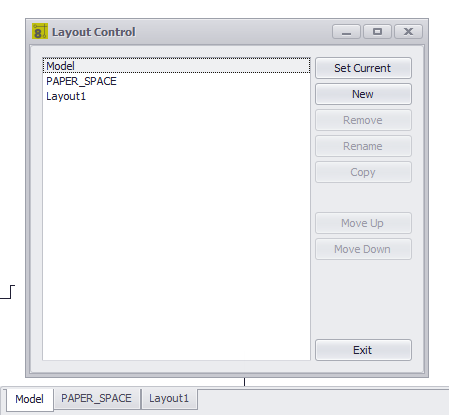
Drawing > Drawing > Layouts
Commandline: layouts
Explanation
A Layout is used to compose or lay out your model drawing for printing. A layout may consist of a title block, one or more viewports, and annotations. As you create a layout, you can design floating Viewport configurations to visualize different details in your drawing.
A layout is a paper space environment that simulates a sheet of paper. In a layout, you can create and position viewport objects, and you can add a title block or other geometry. You can create multiple layouts in a drawing to display various views. Each layout displays the drawing as it will be printed on the sheet of paper.
Typically, when you begin designing a layout environment, you step through the following process:
| 1. | Create a model drawing. |
| 2. | Activate or create a layout. |
| 3. | Insert a title block. |
| 4. | Create floating viewports and position them in the layout. |
| 5. | Set the view scale of the floating viewports. |
| 6. | Print your layout. |
Dialog Options
Item |
Description |
Layout List |
List the Layouts collection. |
Set Current |
Set the selected item to be the current view. |
New |
Create a new Layout |
Remove |
Remove the selected layout as long as it is not the Model |
Rename |
Rename the seleced layout as long as it is not the Model |
Copy |
Copy all entities from the selected layout to a new layout with the name of your choosing. |
Move Up |
Reorder the list |
Move Down |